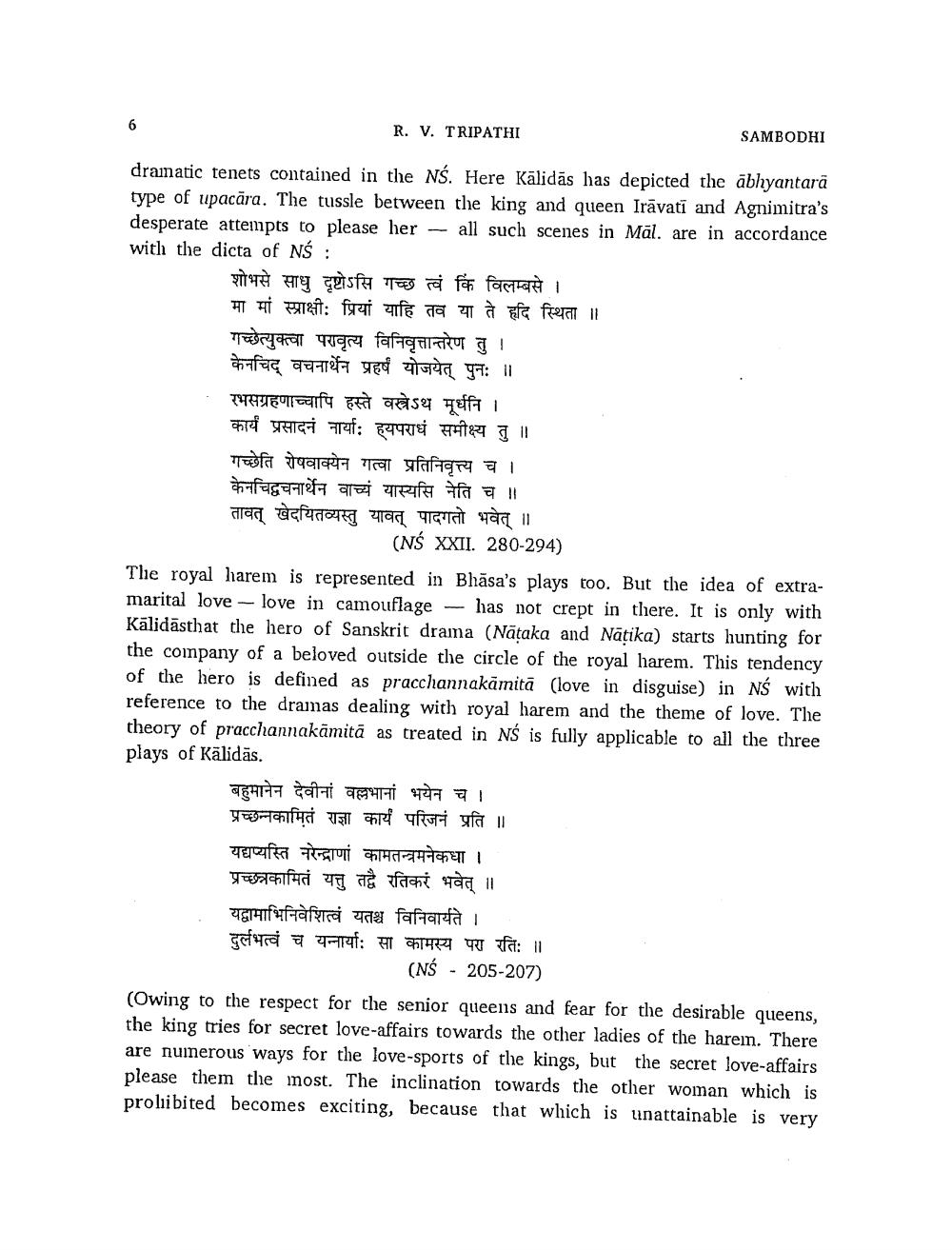________________
R. V. TRIPATHI
SAMBODHI
dramatic tenets contained in the Nś. Here Kälidās has depicted the abhyantara type of upacāra. The tussle between the king and queen Irāvatī and Agnimitra's desperate attempts to please her – all such scenes in Mäl. are in accordance with the dicta of NS :
शोभसे साधु दृष्टोऽसि गच्छ त्वं किं विलम्बसे । मा मां स्पाक्षी: प्रियां याहि तव या ते हृदि स्थिता ॥ गच्छेत्युक्त्वा परावृत्य विनिवृत्तान्तरेण तु । केनचिद् वचनार्थेन प्रहर्षं योजयेत् पुनः ॥ रभसग्रहणाच्चापि हस्ते वस्त्रेऽथ मूर्धनि । कार्य प्रसादनं नार्या: हयपराधं समीक्ष्य तु ॥ गच्छेति रोषवाक्येन गत्वा प्रतिनिवृत्त्य च । केनचिद्वचनार्थेन वाच्यं यास्यसि नेति च ॥ तावत् खेदयितव्यस्तु यावत् पादगतो भवेत् ॥
(NS XXII. 280-294) The royal harem is represented in Bhāsa's plays too. But the idea of extramarital love - love in camouflage - has not crept in there. It is only with Kālidāsthat the hero of Sanskrit drama (Nataka and Nātika) starts hunting for the company of a beloved outside the circle of the royal harem. This tendency of the hero is defined as pracchannakāmitā (love in disguise) in Nś with reference to the dramas dealing with royal harem and the theme of love. The theory of pracchannakāmitā as treated in Nś is fully applicable to all the three plays of Kalidas.
बहुमानेन देवीनां वल्लभानां भयेन च । प्रच्छन्नकामितं राज्ञा कार्य परिजनं प्रति ॥ यद्यप्यस्ति नरेन्द्राणां कामतन्त्रमनेकधा । प्रच्छनकामितं यत्तु तद्वै रतिकरं भवेत् ॥ यद्वामाभिनिवेशित्वं यतश्च विनिवार्यते । दुर्लभत्वं च यन्नार्याः सा कामस्य परा रतिः ॥
(NS - 205-207) (Owing to the respect for the senior queens and fear for the desirable queens, the king tries for secret love-affairs towards the other ladies of the harem. There are numerous ways for the love-sports of the kings, but the secret love-affairs please them the most. The inclination towards the other woman which is proliibited becomes exciting, because that which is unattainable is very




